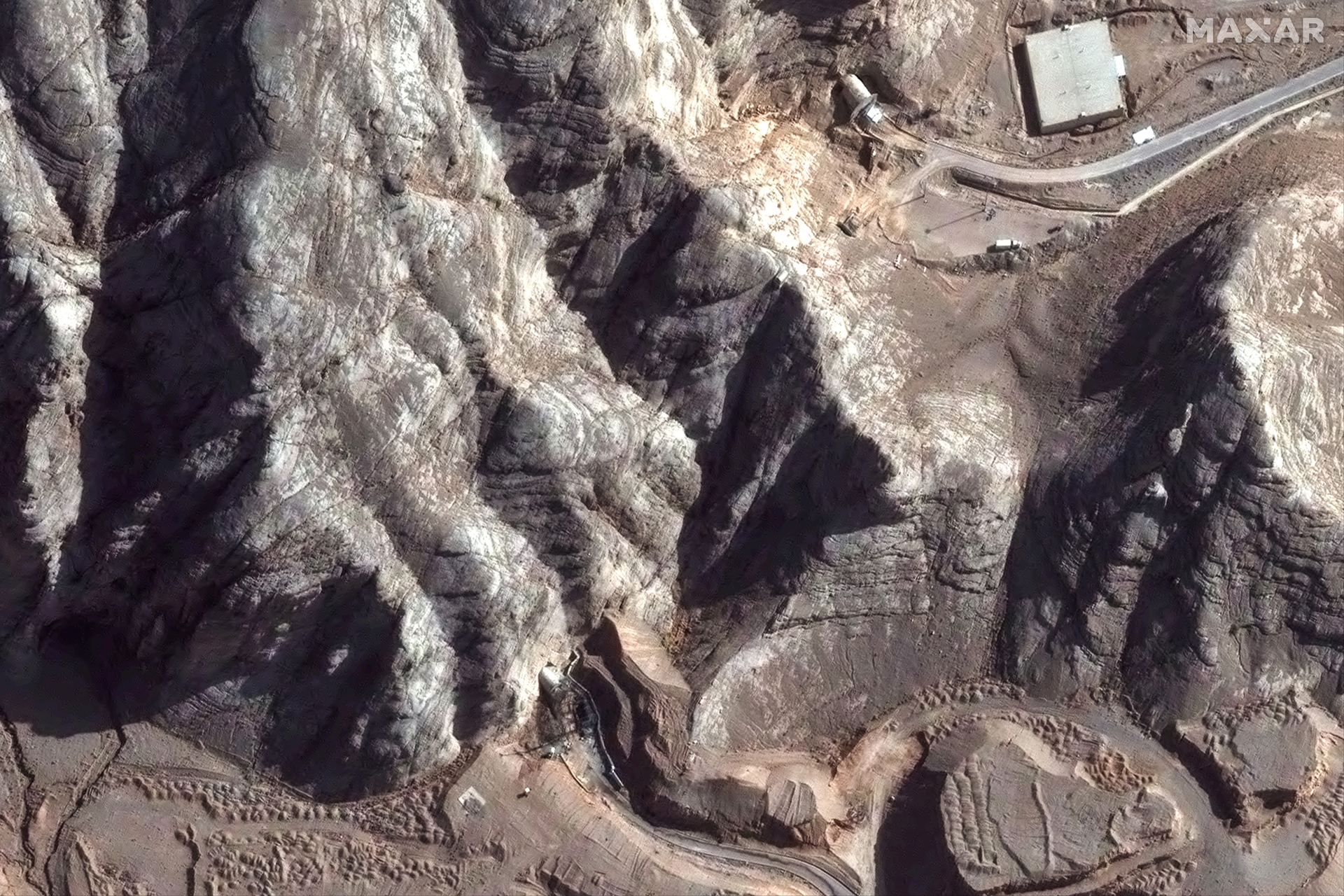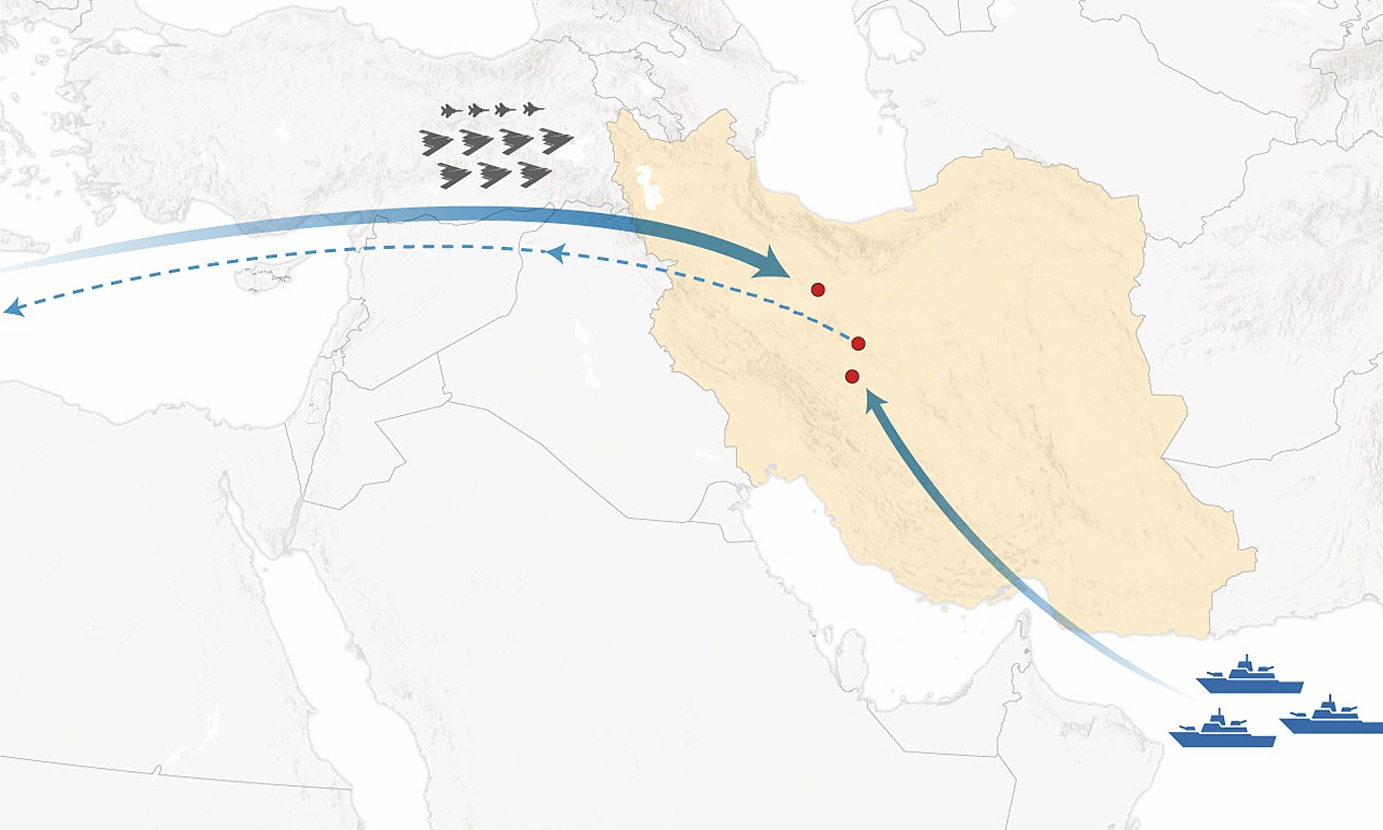CNN reported on 28/6, citing 4 anonymous sources, that US Joint Chiefs of Staff Chairman Dan Caine admitted Isfahan, one of Iran's largest nuclear facilities, is buried so deep underground that even the GBU-57 massive ordnance penetrator would struggle to reach it.
This is the first time US officials have explained why the Isfahan nuclear complex in central Iran was only attacked with submarine-launched Tomahawk cruise missiles during Operation Night Hammer, instead of being hit by GBU-57 bombs like the Fordow and Natanz facilities.
 |
Tunnel entrances at Iran's Isfahan complex in a photo taken on 24/6. Photo: Maxar |
Three sources said Caine made the statement during a closed-door meeting with US senators on 26/6, while the other had seen a report on the operation. The meeting was also attended by US Secretary of Defense Pete Hegseth, Secretary of State Marco Rubio, and Central Intelligence Agency (CIA) Director John Ratcliffe.
"Much of Iran's capability is so deep underground that the US could never reach it. They have the ability to move the rest of their nuclear program to locations where US bombs are completely ineffective," Senator Chris Murphy said after attending the meeting.
A spokesperson for General Caine declined to comment on the information.
President Donald Trump declared that Operation Night Hammer had "obliterated" Iran's nuclear facilities, claiming that Tehran's nuclear program had been set back "decades" and that the country would struggle to restore the bombed sites.
Commercial satellite imagery taken on 24/6, two days after the airstrike, showed above-ground structures at the Isfahan complex had been leveled or severely damaged. Several tunnel entrances in the nearby mountains also showed signs of explosions, but experts believe Iran had proactively sealed them off to limit damage and is working on opening new access routes.
 |
The 37-hour journey of the B-2 bomber that struck Iran. Click for details |
The 6 m long, 0.8 m diameter, and nearly 14-ton GBU-57 MOP is the heaviest non-nuclear bomb and the second-largest in the US arsenal.
The US Air Force has claimed the GBU-57 can penetrate up to 60 m of material before detonating, but did not specify the type of material. Analysts at the UK-based defense journal IHS Janes estimate it can penetrate 60 m of earth or 18 m of concrete.
In the early morning of 22/6, the US Air Force deployed a squadron of 7 B-2 stealth bombers to drop 14 GBU-57 bombs on targets in Iran. 12 of these targeted the Fordow uranium enrichment plant, dubbed Iran's "nuclear fortress", while the other two hit an underground facility at the Natanz nuclear site.
Satellite images taken after the airstrike show bomb craters at the Fordow and Natanz complexes, but the extent of the damage and whether the GBU-57s were effective remains unclear.
Nhu Tam (According to CNN, AFP)












